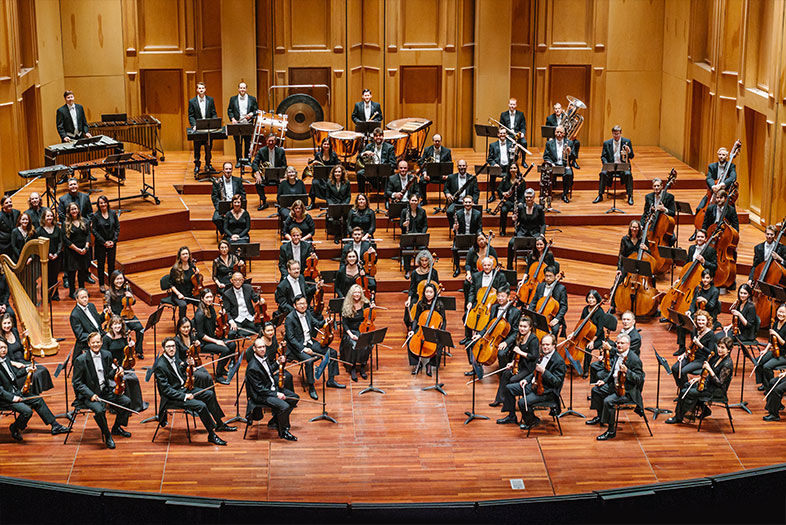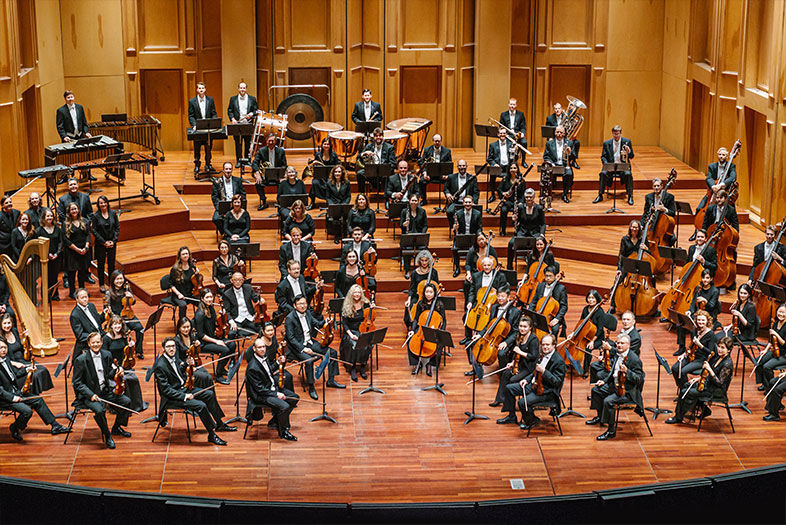Finding a Home
With just enough musicians to pull off Beethoven’s Symphony No. 1, SDSO held its first concert on December 6, 1910, in the US Grant ballroom under the musical direction of Richard Schliewen. The ensemble—fashioned out of Coronado’s Tent City Band and other eager musicians—performed at various venues before staking a claim at the Civic Theatre in 1965. Twenty years later, SDSO permanently moved into The Fox Theatre movie palace, renaming it Copley Symphony Hall in honor of Helen Copley’s $2 million donation toward the property purchase. After a near liquidation in 1998, SDSO received $120 million from Joan and Irwin Jacobs in 2002—the largest private donation to any American symphony organization. A decade later, the orchestra showed its thanks by renaming the building the Joan and Irwin Jacobs Music Center.
A Smokin’ Performance
It wasn’t all encores and roses in SDSO’s initial years. After the original group went on hiatus in 1920, San Diego High School’s director of music, Nino Marcelli, began conducting a group of 90 students and alumni, and eventually received the blessing of SDSO’s previous music director, Buren Schryock, to take up the San Diego Symphony Orchestra name. Feuds with a composer and quarrels with board members years later led Marcelli to leave the podium in 1937 during a performance of Tchaikovsky’s 1812 Overture at the Balboa Park Bowl. Without his consent, soldiers had been hired to carry smoke pots through the audience for special effects and set off howitzers for the song’s finale. Amid audience coughs, Marcelli walked off stage and never returned.
Starry Nights
While the 1812 Overture remains SDSO’s most played piece, the group has continued to update its repertoire to stay with the times—including with unconventional formats and special effects, like films set to live musical accompaniment (the Fox Theatre Film Series) and fireworks (Bayside Summer Nights). But these account for only a few of the 30-plus outdoor shows per year, in addition to 80 indoor performances and time spent as the pit orchestra for the San Diego Opera. Consider its highest grossing performance, a 2017 show with Tony Bennett, or a Star Wars concert that drew 6,000 attendees and cast members from The Force Awakens to the Embarcadero.
Sitting Pretty
How does $72,141, with full benefits, life (and instrument) insurance, and five weeks’ vacation sound? That’s San Diego Symphony Orchestra’s starting offer to its musicians. There are currently 82 of them on its roster, ranging in age from 20s to 70s. Auditions are held on a case-by-case basis—the 22-seat violin section sees the most turnover—and typically draw around 150 candidates to our city from as far as China, Croatia, the Philippines, Taiwan, Bulgaria, and, if you count incoming music director Rafael Payare, now Venezuela. He makes his San Diego debut as the 13th main man at the podium (no women conductors yet) during SDSO’s Hearing the Future festival this month.

PARTNER CONTENT
Inside the Icon: San Diego Symphony Orchestra












